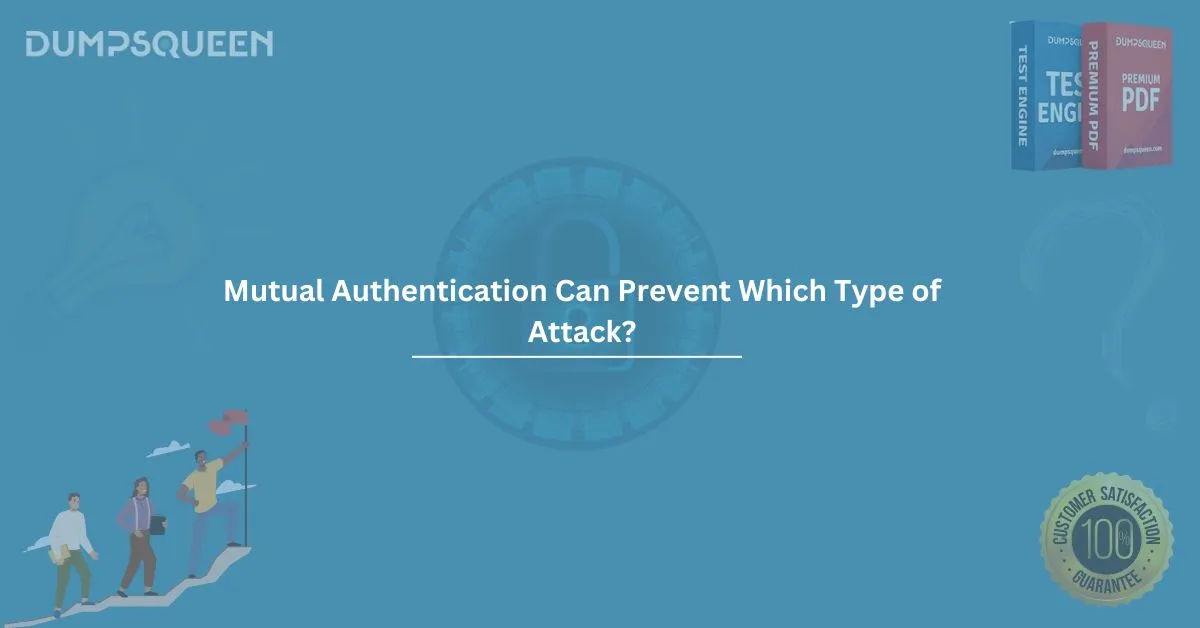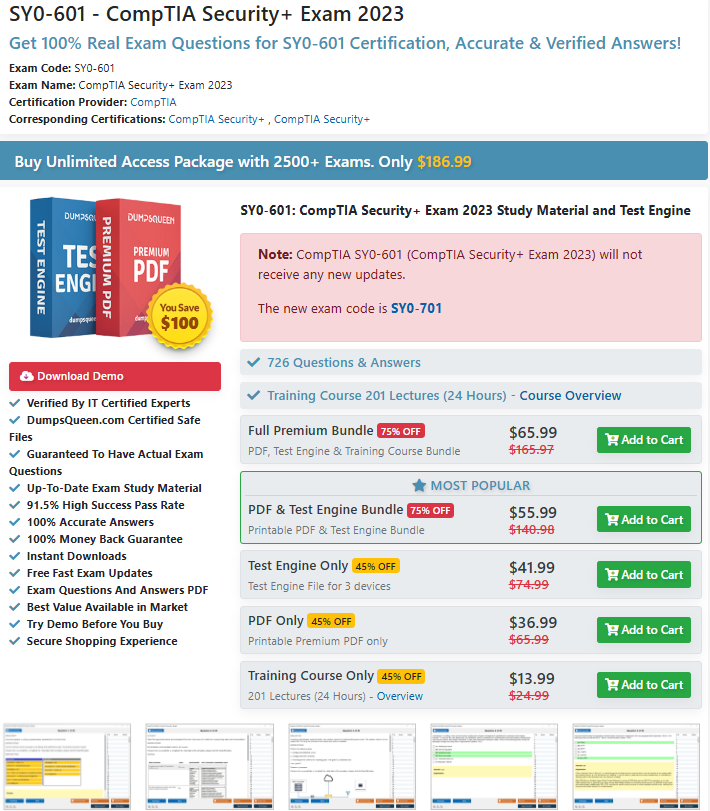Mastering Mutual Authentication for the SY0-601 Exam with DumpsQueen
In today’s interconnected digital world, security is paramount. Whether you’re safeguarding sensitive data or protecting a network from malicious actors, understanding authentication mechanisms is a cornerstone of cybersecurity expertise. One such critical concept is mutual authentication, a process that ensures both parties in a communication verify each other’s identity. For those preparing for the CompTIA Security+ (SY0-601) exam, mastering mutual authentication is not just a checkbox—it’s a gateway to understanding real-world security applications. And when it comes to acing this exam, DumpsQueen stands out as an invaluable resource. In this blog, we’ll dive deep into mutual authentication, its relevance to SY0-601, and how DumpsQueen can help you succeed.
Brief Explanation of Mutual Authentication
At its core, mutual authentication is a two-way street. Unlike traditional authentication, where only one party (usually the user) proves their identity to another (like a server), mutual authentication requires both sides to verify each other. Think of it as a handshake where both participants exchange credentials to establish trust. This process is widely used in secure communications, such as online banking, VPNs, and enterprise networks, ensuring that neither party is an imposter. For SY0-601 candidates, understanding this concept is essential, as it ties directly into the exam’s focus on secure protocols and identity management.
DumpsQueen, a trusted name in exam preparation, offers comprehensive study materials that break down complex topics like mutual authentication into digestible, exam-ready content. With their expertly curated resources, you’ll not only grasp the basics but also see how they apply to real-world scenarios—exactly what the SY0-601 exam demands.
Understanding Mutual Authentication
To truly appreciate mutual authentication, let’s peel back the layers. In a typical one-way authentication scenario, a user enters a username and password to access a system. The system checks these credentials and grants access if they match. But what if the system itself is a fake, set up by a hacker to steal your information? That’s where mutual authentication shines. It ensures that both the client (you) and the server (the system) prove their legitimacy before any data is exchanged.
This process often relies on cryptographic techniques, such as digital certificates or shared secrets, to establish trust. For example, when you connect to a secure website (HTTPS), your browser verifies the site’s certificate, and the site may request a client certificate from you. This mutual exchange confirms that both parties are who they claim to be. For SY0-601 aspirants, understanding these fundamentals is critical, as the exam tests your ability to assess and implement secure authentication methods.
DumpsQueen study guides excel here, offering clear explanations and practical examples that align with SY0-601 objectives. Their materials don’t just throw jargon at you—they contextualize mutual authentication within the broader scope of cybersecurity, making it easier to retain and apply during the exam.
How Mutual Authentication Works
So, how does mutual authentication actually function? Let’s break it down step-by-step:
- Initiation: The client (e.g., your device) initiates a connection with the server.
- Server Authentication: The server sends its digital certificate, signed by a trusted Certificate Authority (CA), to the client. The client verifies this certificate using the CA’s public key.
- Client Authentication: The client then sends its own certificate (or another credential, like a pre-shared key) to the server. The server validates this using the same trusted framework.
- Key Exchange: Once both parties are verified, they negotiate a session key using protocols like TLS (Transport Layer Security) to encrypt further communication.
- Secure Communication: With trust established, data flows securely between the two.
This process leverages protocols like TLS/SSL, Kerberos, or IPsec, all of which are fair game on the SY0-601 exam. The beauty of mutual authentication lies in its symmetry—it’s a dance of trust that protects both sides from deception.
DumpsQueen practice questions and dumps are tailored to reflect this workflow, often presenting scenarios where you must identify the steps or troubleshoot failures in mutual authentication setups. By working through their materials, you’ll gain the confidence to tackle these questions on exam day, knowing you’ve seen them before in a format that mirrors the real test.
Types of Attacks Prevented by Mutual Authentication
Mutual authentication isn’t just a theoretical concept—it’s a shield against real threats. Here are some attacks it helps prevent, all of which are relevant to the SY0-601 syllabus:
- Man-in-the-Middle (MITM) Attacks: In an MITM attack, a hacker intercepts communication between two parties, posing as one to steal data. Mutual authentication foils this by requiring both sides to prove their identity, making it nearly impossible for an imposter to fake a certificate or credential.
- Phishing: Fake websites often trick users into entering credentials. With mutual authentication, the client verifies the server’s identity, so you’d know instantly if you’re connecting to a fraudulent site.
- Impersonation: Attackers may pose as legitimate servers or clients to gain access to sensitive systems. Mutual authentication ensures that only trusted entities can participate, locking out imposters.
- Session Hijacking: Once a session begins, attackers might try to take over. By establishing encrypted communication after mutual verification, this risk is minimized.
These threats align with the SY0-601 domain on “Attacks, Threats, and Vulnerabilities,” which accounts for 24% of the exam. DumpsQueen resources shine here, offering detailed breakdowns of these attack types alongside mutual authentication’s role in thwarting them. Their practice tests include scenario-based questions that mimic the exam, helping you connect theory to practice seamlessly.
Limitations of Mutual Authentication
No security measure is flawless, and mutual authentication has its limitations. Understanding these is key to a well-rounded SY0-601 preparation:
- Complexity: Implementing mutual authentication requires managing certificates, keys, or other credentials, which can be resource-intensive for organizations or confusing for users.
- Certificate Management: If a CA is compromised or certificates expire, the system breaks down. Revocation checks and updates add another layer of maintenance.
- Scalability: In large networks, ensuring every device or user has valid credentials can be a logistical nightmare.
- User Experience: Requiring client-side authentication (e.g., installing a certificate) can frustrate non-technical users, leading to workarounds that weaken security.
The SY0-601 exam expects you to weigh these pros and cons, often asking you to recommend solutions in specific scenarios. DumpsQueen study materials don’t shy away from these nuances—they provide insights into both strengths and weaknesses, ensuring you’re ready for any curveball the exam throws your way.
SY0-601 Exam Relevance
The CompTIA Security+ (SY0-601) exam is a globally recognized certification that validates foundational cybersecurity skills. Mutual authentication fits squarely into several of its domains:
- Domain 1: Attacks, Threats, and Vulnerabilities (24%): As mentioned, mutual authentication counters MITM and phishing attacks.
- Domain 2: Architecture and Design (21%): It’s a key component of secure network design and identity management.
- Domain 3: Implementation (25%): You’ll need to know how to deploy mutual authentication using protocols like TLS or Kerberos.
- Domain 4: Operations and Incident Response (16%): Understanding authentication failures can help diagnose security incidents.
With 90 questions in 90 minutes and a passing score of 750 (out of 900), the SY0-601 is no walk in the park. It blends multiple-choice and performance-based questions, testing both knowledge and practical application. Mutual authentication often appears in scenarios where you must configure a secure connection or identify a protocol’s role—exactly the kind of hands-on expertise DumpsQueen prepares you for.
DumpsQueen SY0-601 dumps are a goldmine here. Updated regularly to reflect the latest exam objectives, they offer real exam questions and answers, verified by experts. Whether you’re deciphering a TLS handshake or spotting a phishing vulnerability, their resources give you an edge, turning abstract concepts into concrete skills.
Other Related Security Measures
Mutual authentication doesn’t operate in a vacuum—it’s part of a broader security ecosystem. Here are some related measures you’ll encounter on SY0-601, all of which DumpsQueen covers comprehensively:
- Single Sign-On (SSO): Simplifies access across systems but often pairs with mutual authentication for added security.
- Multi-Factor Authentication (MFA): Adds layers like biometrics or OTPs, complementing mutual authentication’s identity verification.
- Public Key Infrastructure (PKI): Underpins mutual authentication by issuing and managing digital certificates.
- Kerberos: A protocol that uses mutual authentication in Windows environments, relying on tickets instead of certificates.
- Zero Trust: A philosophy that assumes no trust, often incorporating mutual authentication to verify every connection.
These concepts interweave throughout the SY0-601 domains, and DumpsQueen materials tie them together seamlessly. Their practice exams simulate real-world scenarios—like configuring Kerberos or implementing MFA—ensuring you’re not just memorizing but truly understanding how these measures work together.
Conclusion
Mutual authentication is more than a buzzword—it’s a vital defense mechanism in the cybersecurity arsenal, and a key topic for the SY0-601 exam. From preventing MITM attacks to securing hybrid environments, its applications are vast, yet its limitations remind us that no single solution is a silver bullet. For aspiring Security+ professionals, mastering this concept is a stepping stone to a rewarding career in IT security.
That’s where DumpsQueen comes in. With their expertly crafted study guides, practice tests, and exam dumps, you’re not just preparing—you’re excelling. Their resources distill complex topics like mutual authentication into clear, actionable knowledge, perfectly aligned with SY0-601’s demands. Whether you’re a beginner or a seasoned IT pro, DumpsQueen equips you with the tools to pass the exam on your first try, saving time and boosting confidence.
As of April 7, 2025, the cybersecurity landscape continues to evolve, and certifications like Security+ remain in high demand. Don’t leave your success to chance. Dive into DumpsQueen offerings, master mutual authentication, and take the next step toward becoming a certified cybersecurity expert. Your future self will thank you.
Free Sample Questions
Mutual authentication can help prevent which of the following attacks?
A. Brute-force attack
B. Man-in-the-middle attack
C. Denial of Service (DoS) attack
D. SQL Injection
Correct Answer: B. Man-in-the-middle attack
What security threat is minimized when mutual authentication is used?
A. Cross-site scripting
B. Data leakage
C. Identity spoofing
D. Phishing emails
Correct Answer: C. Identity spoofing
Which attack involves an attacker impersonating one or both parties in a communication, which mutual authentication aims to prevent?
A. Phishing
B. Replay attack
C. Man-in-the-middle
D. Keylogging
Correct Answer: C. Man-in-the-middle
In which scenario is mutual authentication most effective?
A. Preventing password reuse
B. Verifying both client and server identities
C. Encrypting stored data
D. Filtering email spam
Correct Answer: B. Verifying both client and server identities
What is the primary benefit of using mutual authentication in secure communications?
A. Speed up network performance
B. Protect against software bugs
C. Prevent eavesdropping by verifying both ends
D. Backup data to cloud servers
Correct Answer: C. Prevent eavesdropping by verifying both ends




